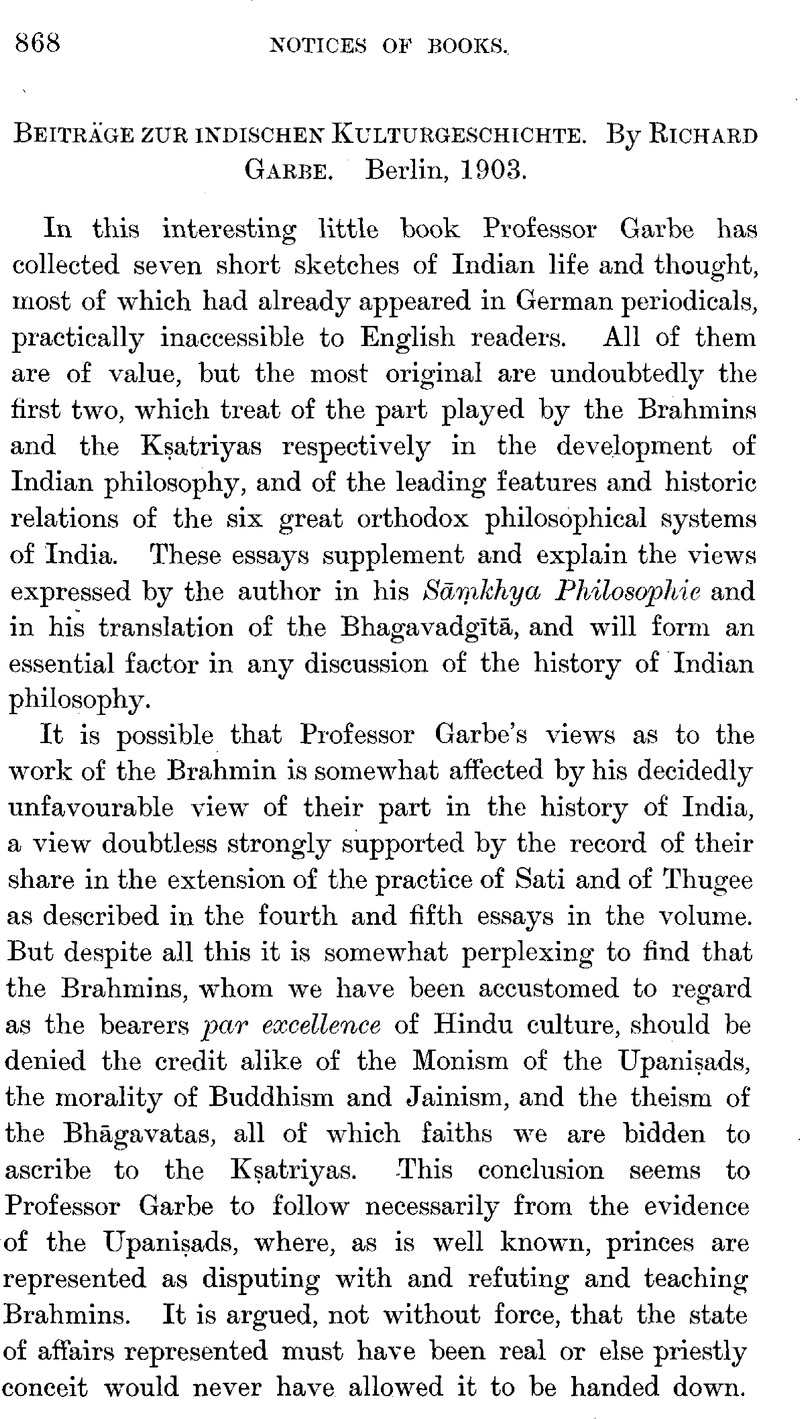No CrossRef data available.
Article contents
Beiträge zur indischen Kulturgeschichte. By Richard Garbe. Berlin, 1903.
Published online by Cambridge University Press: 15 March 2011
Abstract

- Type
- Notices of Books
- Information
- Copyright
- Copyright © The Royal Asiatic Society 1908
References
page 870 Note 1 Cf. J.R.A.S., 1906, pp. 490 seq.Google Scholar
page 872 Note 1 J.R.A.S., 1908, p. 606.Google Scholar
page 870 Note 1 J.R.A.S., 1905, pp. 384 seq. I am glad to be able to agree with Dr. Kennedy on one point, as regarding Kṛṣṇa as always divine (supra, p. 520). Dr. Kennedy's views and mine are too different to render further reply to his note (pp. 516–21) useful. But I must protest against the attribution to me of the view that the ox was Kṛṣṇa's totem (p. 520). I do not understand how a god can have a totem, and reference to my remarks on p. 174 will show that I have not even regarded Kṛṣṇa in ox-shape (assuming he was so conceived) as a totem, but rather as an incarnation of a vegetation spirit. It should be remembered that Dionysus was worshipped as a bull—I confess I find it difficult to make that bull into clouds—and Dr. Kennedy's own theory connects Dionysus and Kṛṣṇa. For the rest I fear I cannot accept the view that Apollo, or Herakles, or Osiris are sun-gods proper; as regards Pūṣan I am doubtful.Google Scholar




